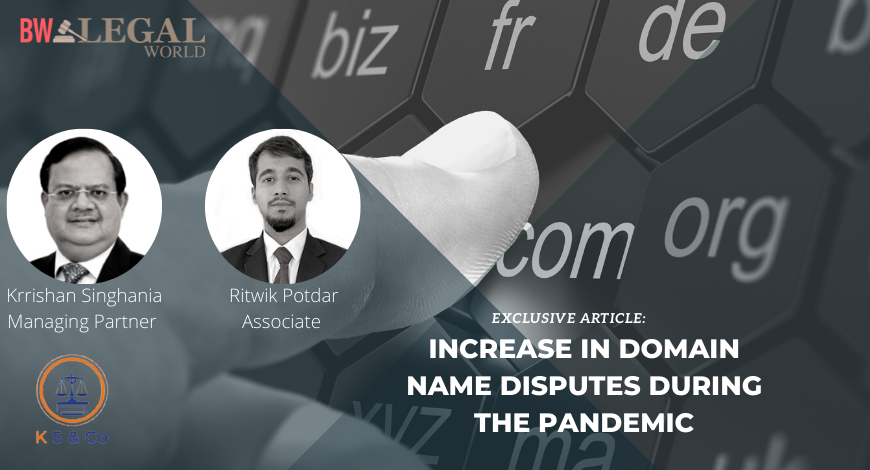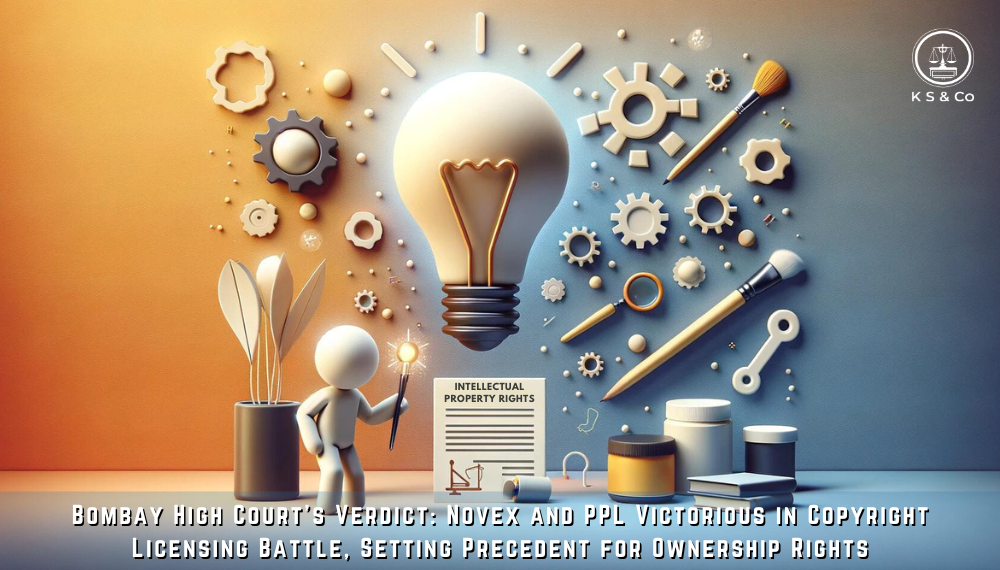Domain names play a vital role in business because it is being used by the public to identify businesses on the internet as it has become increasingly important to establish an online presence for credibility and ease of access to customers.
Especially in light of COVID-19 when businesses are embracing the digital space, many individuals and organizations have understood that having a domain name, which is equivalent to their organization name and/or the name of one of their items, is very important. However the pandemic has also increased domain name disputes because they were being used to spread misinformation and to engage in illegal and fraudulent activities to mislead consumers and businesses that relied on such information during the pandemic.
In this article we aim to answer some legal questions related to domain names, its types, enforceability and how one can tackle domain name disputes by getting various remedies.
During the Covid-19 pandemic, cyber-squatters have registered several well known domain names such as facebookloginhelp.net or givebackgeico.com etc. These have been disputed by the owners of the trademarks who have been able to prove that the domain names were registered in bad faith.
What is a domain name?
As per Black’s Law Dictionary ‘Domain Name’ refers to the words and characters that website owners designate for their registered internet addresses. Simply put, it is a resource name on the internet which is universally understood by web servers and online organizations alike and also provides all the destination information.
They are used to locate a website and are popularly known as Uniform Resource Locator (URL). It mainly consists of two parts: top-level and second-level domain names.
How can the domain name be registered or protected?
The domain name can be registered and protected as trademarks as long as it meets the requirements of a trademark under the Trade Marks Act of 1999. For registering a domain name, a person needs to go to the website of an accredited domain name registrar and find out if the name has already been taken or not. The registrar would inform the registry operator who maintains a database of the registered names and an entry is then added for the domain name along with the contact information. If any user has to register a domain name then that person has to register it with Internet Corporation for Assigned Names and Numbers (‘ICANN’) through a Registrar who are accredited by ICAAN itself.
What are the different types of domain names?
Different types of domain names are as follows:
- Top-Level Domains (TLDs): These are the series of letters following the last ‘.’ (dot). (e.g. ‘.com’ is the most common extension).
- Generic Top-Level Domain (gTLDs): It is a nonexclusive top-level domain name which distinguishes the domain class it is related with. (e.g. ‘.edu’ for academic organisations, ‘.gov’ for governmental agencies, etc.)
- Country Code Top-Level Domain (ccTLD): It is an expansion with respect to a nation, a geographic area or a region. (e.g. ‘.in’ for India, ‘.de’ for Germany, ‘.us for United States of America, etc.)
What is a domain name dispute?
A dispute in relation to the domain name arises when a party registers an earlier adopted trademark as their domain name. It is essential that the trademark of the complainant must be identical or confusingly similar to the disputed domain name. Thus, in other words a domain name dispute may arise when there is an infringement, and/or unauthorised use of a domain name on part of an individual. Some of the ways in which domain infringement can happen are:
- Cyber-squatting: It happens when an individual registers any domain name with no intention of carrying out any legitimate commercial or non-commercial activities.
- Meta Tagging: It is when words and tags are used to manipulate search engines into displaying the infringed website. These are similar to hashtags that are used on social media to increase the visibility.
- Linking & Framing: It happens when a user clicks on a text hyperlink which takes them to an altogether different website. This website is similar to that of a famous company and is created solely to deceive the consumers.
How are domain name disputes increasing due to the pandemic?
The Governments around the world have implemented lockdown in an attempt to prevent the spread of the novel COVID-19 virus. These measures have also created a problem online apart from being effective in slowing down the virus. The shift to the virtual world has created an ideal environment for many cyber squatters and other online criminals to make their moves wherein pandemic appears to have fuelled an increase in cybercrime.
A lot of domain name registration authorities have reported an increase in the number of domain names which have been registered.. The rise of online infringements during the pandemic can be seen by the increase in Uniform Dispute Resolution Policy (UDRP) decisions which are issued by World Intellectual Property Organization (WIPO). Adequate measures to prevent online infringement were taken before the virus emerged and the UDRP was one of them. This alternative dispute resolution system enabled trademark owners to claim domain names that were identical and/or confusingly similar to their trademarks.
The types of cases encountered during the novel pandemic were mainly that of cyber squatting. Thousands of domain names containing terms linked with the virus have been registered since the start of the pandemic. Even though some of these domain names were used for legitimate purposes such as disseminating facts and information, most of them targeted trademark owners which then led to creation of domain names such as ‘sanoficovid19vaccine.com’, ‘dettolhandsanitizer.com’ and ‘labcorpcovid.com’ to target the trademarks of the healthcare sector companies. Not only this but companies which were outside the healthcare sector were also targeted by domain names such as ‘facebookcovid19.com’, ‘myverizonwirelesscovid19.com’ and ‘tokyo2021.cn’. Nonetheless,, it can be said that WIPO has continued to provide its full domain name dispute resolution services.
What are the legal steps one can take to fight domain name disputes?
The parties can always turn to the courts whenever a dispute arises over the registered domain name. Undoubtedly, the courts have the authority to hear the case pertaining to control and ownership but this process might be slow. It should be noted that the owner of the trademark must prove that the other party has used the identical or confusingly similar trademark. Further, the complainant must prove that the registrant has no legitimate interest in the domain and that the same has been registered malafide.
The legitimate owner of the trademark can file a suit at the civil court if they need to obtain an injunction or compensation. If the owner succeeds, then the domain name will be suspended and all the rights will be transferred to them.
What are the procedures for resolution of domain name disputes under the UDRP and INDRP?
As mentioned above, a complaint relating to Generic Top-Level domain (gTLD) name can be filed by a person or any company from anywhere in the world by using the procedures put forward by the UDRP. Paragraph 4 of the UDRP mentions the type of disputes for which it is required to submit to a mandatory administrative proceeding which would be conducted before one of the administrative dispute resolution service providers The stages in a UDRP Administrative Procedure are as follows:
- It begins with the complainant filing a complaint with an ICANN which would chosen by the complainant himself.
- The responding party to the complaint would then file a reply.
- Next step includes appointment of an Administrative Panel by the selected service provider of one or three persons who would be hearing the dispute.
- The decision of the Administrative Panel shall be issued to all relevant parties.
- The registrar so concerned shall implement the decision given by the Administrative Panel.
It is to be noted that if there is a decision delivered, then the respective registrar shall execute the same within the time period which has been decided by the panel.
Similarly, the procedure for filing a complaint under INDRP is as follows:
- Any person may initiate a proceeding by submitting a complaint to the .IN Registry in accordance with the rules and policy. Remember that separate complaint has to be filed for each domain name.
- The .IN Registry will then, on receiving the fees and if in accordance, forward the complaint to the respondent. The complainant will have to rectify the mistakes if any discrepancies are found.
- The .IN Registry would appoint an arbitrator from the list of arbitrators which has been maintained and available for public as whole and is then notified to the parties.
- Now the arbitrator must forward a copy of the award to the parties and the registry within 60 days but may be extended only with a valid reason.
- The arbitrator may, by his sole discretion, allow a hearing for determining the complaint.
- The decision which has been decided by the arbitrator on the basis of statements and documents submitted to it and also the Arbitration and Conciliation Act of 1996 shall forward its decision about the complaint to the .IN Registry within 60 days from the commencement date.
- The .IN Registry will then communicate the full text of the decision to each party along with the date of implementation within 5 days from getting the decision from the arbitrator.
Further, it is important to note that the INDRP restricts a registrar from transferring a disputed domain name registration to another holder in case a proceeding is initiated for a time period of 15 days after such proceeding is concluded or while the dispute is still pending.
We hope you found the article interesting! It is important to note that as virtual world has become a new market place for goods and services, therefore protecting your intellectual property, trademark through registering domain name is the first step to protect your trademark in the virtual world. It is not only important to register but also to be vigilant that nobody infringes your domain name.






Leave a Reply